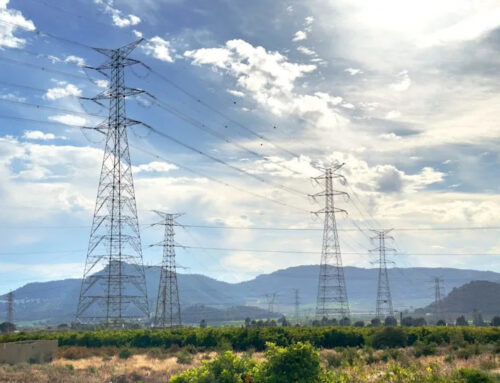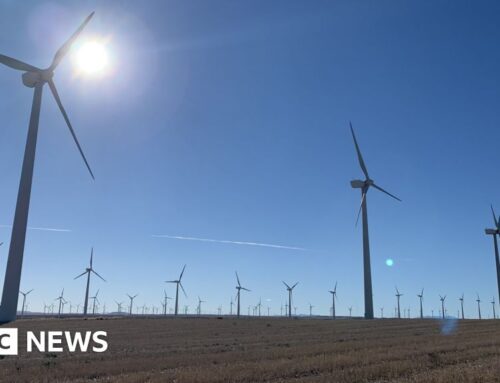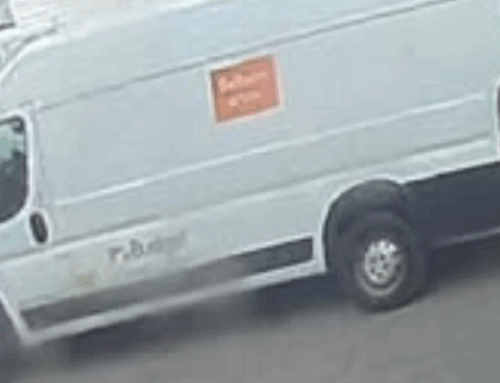Current Climate: Major Assault On California’s Environmental Rules
May 5, 2025
Plus: Elon Musk runs out of ideas to save Tesla; cheaper, domestically sourced lithium-sulfur batteries
Current Climate brings you the latest news about the business of sustainability every Monday. Sign up to get it in your inbox.
California has had the nation’s toughest air pollution rules for decades for a simple reason: the most densely populated part of the Golden State has the nation’s dirtiest air, the result of vast numbers of cars and trucks, a dry climate and mountains that prevent exhaust from dissipating. For that reason, since 1967, the year then-Governor Ronald Reagan created the state’s Air Resource Board to monitor and reduce exhaust pollution, the state has had permission under the Federal Air Quality Act to set stricter rules than national standards to curb smog and pollution linked to fatal heart and lung disease and other health harms.
Despite opposition from carmakers, that decision has been spectacularly successful, aided by new technology. Catalytic converters first became standard on cars sold in California and eventually on those sold across the nation, dramatically reducing both harmful tailpipe exhaust and the number of air-quality alerts that were common in Los Angeles in the 1970s and 80s. The state also requires the cleanest fuel sold in the nation, a long-time irritant to the biggest oil companies.
In the 2000s, under then-Governor Arnold Schwarzenegger, California regulators began to expand rules to reduce carbon emissions and other greenhouse gases. It also launched the country’s first zero-emission vehicle program in the late 1990s, which gave rise to EV makers like Tesla and jump-started a global market for emission-free cars now dominated by China.
Five years ago, Gov. Gavin Newsom announced that the state would ban sales of new gasoline-powered autos starting in 2035, shifting the state to 100% electric-powered vehicles. Trucks are to follow, with gasoline- and diesel-powered vehicles to be phased out so that all new commercial vehicles will be zero-emission by 2045.
But those efforts and even California’s ability to set tough pollution rules–which are followed by a dozen other states–are now at risk from efforts by the Trump Administration and Republican-controlled Congress. The House last week voted to revoke three federal waivers that underpin California’s authority to set tougher rules as well as waivers mandating electric truck and car sales, despite the fact that both the Government Accountability Office and Senate parliamentarian determined that Congress lacks the authority to undo the waivers in the manner being attempted. Now the matter goes to the Senate for a vote, where the final outcome is still unclear.
Such a rollback would be a devastating blow not just to California, but to automakers that for many years have poured billions of dollars into developing and selling ever cleaner, ever more fuel-efficient gasoline vehicles, hybrids, plug-in hybrids and EVs which have surged in popularity. Undoubtedly, President Trump would sign off on legislation if it makes its way to his desk–something with more legal heft and staying power than his executive orders–given his desire and policy push to dramatically increase the use of domestically sourced fossil fuels, with no consideration for the environmental impact of doing so.
But before that happens there’s a big legal fight coming.
The Big Read
Elon Musk Is Running Out Of Ideas To Save Teslas
Last month, Tesla posted its worst quarterly results in four years. Sales were down 9%. Income plummeted 71%—hurt by a 20% drop in automotive revenues. And given tariffs and rocky market headaches, the company didn’t bother giving sales targets for the rest of the year.
But the stock rallied, jumping 9% since Tuesday as investors cheered one thing: Elon Musk says he’ll soon step back from his duties gutting the federal government through DOGE, and return to running the show at Tesla in a more full-time capacity (excepting his other responsibilities at SpaceX, xAI and Neuralink).
That’s not the cure-all investors seem to think it is. The problems Tesla now faces have been exacerbated by Musk joining the Trump Administration as a “special government employee” — declining profit margins, intensifying competition and a tarnished brand image. And they show no signs of disappearing any time soon, even if Musk becomes a more active CEO again. Worse, it’s becoming clear Musk has run out of ideas for how to fix them, instead fixating on an uncertain future focused on robotaxis and humanoid robots.
For now, Tesla profits from selling cars and battery storage systems and both businesses are in trouble. It has no successor to monster sellers like the Model Y and Model 3 (Cybertruck, its latest release, has been one of the biggest flops in automotive history). At the same time, it’s about to get hit by President Trump’s tariffs, which are expected to chill auto sales across the industry. Worse for Tesla though, a coming 145% tariff on imported Chinese battery cells is set to hammer the company’s battery pack business, one of the only bright spots last quarter.
Hot Topic
Keith Norman, Lyten’s chief sustainability officer, on domestically sourced, high-powered lithium-sulfur batteries
The battery market for EVs and other applications is dominated by lithium-ion cells using Chinese-refined nickel, manganese, cobalt and graphite. Cheaper lithium-iron phosphate, or LFP, cells are also supplied almost entirely by Chinese companies. How does that compare to the lithium-sulfur cells Lyten is developing?
We have seen just an incredible growth in demand for lithium-sulfur that has really emerged over the last six to nine months. And it’s really driven by two features of the lithium-sulfur battery. One is the supply chain benefits of domesticating and localizing the full supply chain for lithium-sulfur. These can be fully sourced and manufactured in the U.S. now, but also can be sourced and manufactured in Europe, the Middle East, in other parts of the world. That’s been a big driver as the huge growth in energy storage demand and customers looking for more stability in their supply chain. These things are important for grid stability and infrastructure development.
You delivered test packs to automaker Stellantis and other customers last year. What’s Lyten’s commercialization plan?
Phase one starts the second half of this year where we will be delivering cells for drones, satellites and some defense applications. So smaller quantity cells where there’s high dependency on weight reduction. Lithium-sulfur is a much lighter weight, more energy-dense battery, so really leaning on the weight performance of the battery. The second phase, which we’ll start to deliver next year, is for the stationary energy storage market.
Those will start launching next year and then following that will be when the automotive sales start entering the market. The design cycle with Stellantis and other auto OEMs is about a four-year cycle. We started that last year with multiple automakers. We’re now at year two of about a four-year process that’s required, to go through all the certifications, all the testing, all the designing, to be ready for commercial automotive applications.
Lithium-ion has been widely used for energy storage for years, mainly because it was the only option, but they’re more expensive. LFP cells have gained in popularity but the Trump tariffs eliminate their cost advantage. Is lithium-sulfur going to be a big player in the energy storage market?
Our view is that if you look 10 years from now, it’s unlikely you’ll find lithium-ion style batteries in energy storage solutions anywhere. Different chemistries, be they LFP, lithium-sulfur or sodium-ion for some use cases, all of those have advantages as they scale into the market. Obviously, LFP has scaled, but as the other chemistries scale, they have advantages both from a supply chain and cost and from performance. It feels inevitable in our mind that that changeover is happening.
What’s the advantage the lithium-sulfur has in terms of energy density compared with lithium-ion batteries?
Right now we are sitting at about a 20% improvement in energy density versus [lithium-ion] with the cells we’re producing today. The beauty of lithium-sulfur is its theoretical limit is about five times higher energy density than lithium-ion. What that means is you have a lot more room for innovation to be moving up that curve. We’re seeing about a 15% to 20% improvement every year in the energy density of the battery. And we expect that all of our modeling, all of our innovation plans, to continue through at least the end of the decade. So if you just do the math, we’re working toward two times the energy density versus [lithium ion]. Now versus lithium iron phosphate, we’re already at about twice the energy density and are moving toward more of a three-times or more the energy density of a lithium iron phosphate, on a weight basis.
What Else We’re Reading
Scientific groups plan to keep working on U.S. climate assessment. The organizations said they would publish researchers’ work even after the Trump administration decision to dismiss all authors on the project (New York Times)
Climate protestors rush the stage during Charles Koch’s award speech. Koch, 89, co-CEO of Koch Inc. and a major Republican donor for decades, was accepting the Cato Institute’s Milton Friedman Prize for advancing liberty before several hundred attendees at the Washington Hilton’s ballroom (Forbes)
The Trump administration dismissed more than 400 experts who had started work on the latest National Climate Assessment report, saying the scope of the report was being reevaluated. One scientist said: “Climate change puts us all at risk, and we all need this vital information to help prepare (Los Angeles Times)
Trump shut down a program to end human waste seeping into Alabama homes, calling it ‘illegal DEI.’ A $26 million federal program to help residents of Lowndes County, Alabama, who have dealt with inadequate sewage systems for decades, was stopped by an executive order. (NBC News)
House Republicans advanced a new $250 annual fee on electric cars but dropped a $20 federal yearly registration fee on all vehicles starting in 2031 to fund road repairs as part of a tax reform bill under consideration (Reuters)
How behavioral science can help increase sustainable travel trends. “[Our] study shows that smart, psychologically grounded messaging can influence guests to adopt more sustainable habits,” said Xavier Font, professor of sustainability marketing at the University of Surrey. (Forbes)
More From Forbes
Search
RECENT PRESS RELEASES
Related Post



